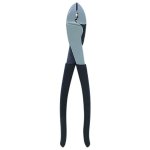Bigbikebob
10 W
I prefer to avoid soldering and from what I read crimping is the preferred method to join wires in the auto and aero industry.
Hall sensors / throttle are covered by jst-sm connectors
Battery can be connected via Anderson power connectors which I don't like because they are bulky and have a low amperage rating.
Phase wires can be connected via crimped bullets which are nice but not nice as a MT60 3 Pole Motor connectors.
There are many nice high amperage connectors like the XT90, EC5, HXT and all of them need to be soldered.
My question is do I have to choose between Anderson power connectors to butt splice a pigtailed connector (XT90, EC5, HXT) or are there other connectors for high amperage?
Hall sensors / throttle are covered by jst-sm connectors
Battery can be connected via Anderson power connectors which I don't like because they are bulky and have a low amperage rating.
Phase wires can be connected via crimped bullets which are nice but not nice as a MT60 3 Pole Motor connectors.
There are many nice high amperage connectors like the XT90, EC5, HXT and all of them need to be soldered.
My question is do I have to choose between Anderson power connectors to butt splice a pigtailed connector (XT90, EC5, HXT) or are there other connectors for high amperage?



